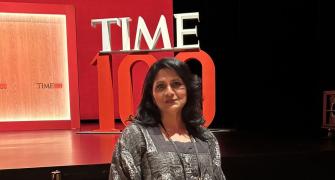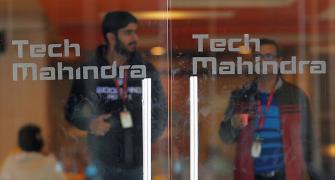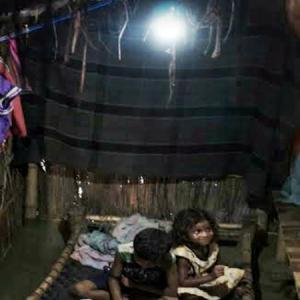 On paper, only 8,000 villages remain to be electrified in the country, but the situation on the ground shows euphoria over numbers is misplaced
On paper, only 8,000 villages remain to be electrified in the country, but the situation on the ground shows euphoria over numbers is misplaced

In 2005, when the rural electrification drive was started, the government was up against a massive target. There were nearly six lakh villages in India that were without power. Over the years, this number has reduced to just 8,000. By any yardstick, this is a sign of clear progress.
But in India’s effort to take power to all, numbers don’t tell the whole story. In Nagela Fatela, for example, a village in Uttar Pradesh’s Mahamaya Nagar district, which found a special mention in Prime Minister Narendra Modi’s Independence Day speech as a shining example of an electrified village, nearly half the households do not have power supply.
Nagela Fatela was one of the villages where power infrastructure was constructed under the prime minister’s rural electrification drive. Since the revelation, however, the village has become the centre of a row between the Union power ministry and the UP government, with both sides blaming each other for the lack of progress.
The reason Nagela Fatela is partially in darkness 70 years after Independence, however, is rooted in the way policies are drafted in the country.
According to the Rural Electrification Policy, 2006, a village is classified as electrified if the basic infrastructure (distribution transformer and power lines) is in place.
“A village is electrified if electricity is provided in the inhabited locality as well as a minimum of one Dalit basti / hamlet; and to public places like schools, panchayat offices, health centres, dispensaries, and community centres. The number of households electrified is at least 10 per cent of the total number of households in the village,” says Section 5.1 of the policy.
In other words, the government’s notion of “electrified” doesn’t mean electricity is actually available.
“The final outcome of the centrally-sponsored programme is putting up infrastructure for power supply. In no policy document, the quality of power supply or assurance of the same is mentioned. Power supply is state’s discretion, but, then, the Centre also never had any guidelines,” says a former power ministry official who does not want to be named.
While UP may be the state where all the drama over rural electrification is currently unfolding, the ground truth in other states is no different. Of the six lakh villages that are claimed to be electrified, more than half are yet to be “intensively electrified”, meaning electricity infrastructure is still to be made available to everyone in the village/district.
Further, even in villages where electricity infrastructure has been set up, 1.5 crore households are without any metered connection, according to government estimates.
Looking for a new approach

Over the years, the government’s rural electrification programmes have focused on just one thing: infrastructure creation. A year after the Rajiv Gandhi Grameen Vidyutikaran Yojana (RGGVY) was launched in 2005, the drive was made a joint responsibility of the Centre and the state. In 2008-09, the government set a goal to provide at least eight hours of power to all electrified households. Thereafter, power-for-all was added to its goals.
“We have made step by step progression. But, now that we are closing in on basic targets, it is time to shift gears and focus on quality of power supply. We can’t rule out the fact that electricity demand in rural households is slowly inching up towards urban levels. Over the years, successive governments in a bid to achieve physical targets have paid little attention to supplying power,” says a former bureaucrat who does not want to be named.
Policymakers and regulators note there is no dearth of regulations to ensure regular power supply in villages, but the laws are rarely put to use.
“The standard of performance suggested for discoms to supply to rural areas is lower than that for urban areas on an average across the country. This affects the quality of power in villages,” says Pramod Deo, former chairperson, Central Electricity Regulation Commission.
However, he adds that Section 23 of the Electricity Act, 2003, empowers the State Electricity Regulatory Commissions (SERC) to pass orders to ensure “power supply in both rural and urban areas have the same quality.”
Except Maharashtra, which has a load-shedding protocol, none of the states has any policy advocating power supply parity in urban and rural areas. “It is the SERC’s prerogative to tackle shortage of electricity. The regulator has to decide how the power supply is regulated,” says Deo.
Making it economical

At the same time, say experts, rural electrification programmes need to focus on making power supply an economically viable proposition for power distributors and suppliers.
At present, villagers do not like to install meters and often resort to illegal connections to light up their homes. While discoms and local authorities try to nudge them to apply for a proper connection, they have had little success so far.
To an extent, political parties promising free or highly-subsidised power to villagers have been responsible for creating this mindset.
“We have to understand that the electricity business has to be treated as a business. The subsidy should be upfront for the beneficiaries and then monitored regularly. Otherwise, it becomes a vicious circle of power theft and hiding of theft,” says the former bureaucrat.
Lately, some steps have been taken in this direction. The Rural Electrification Commission, for example, is working on a feeder monitoring system to a keep tab on the quality of power supplied in rural areas.
Photograph: Rupak De Choudhury/Reuters









